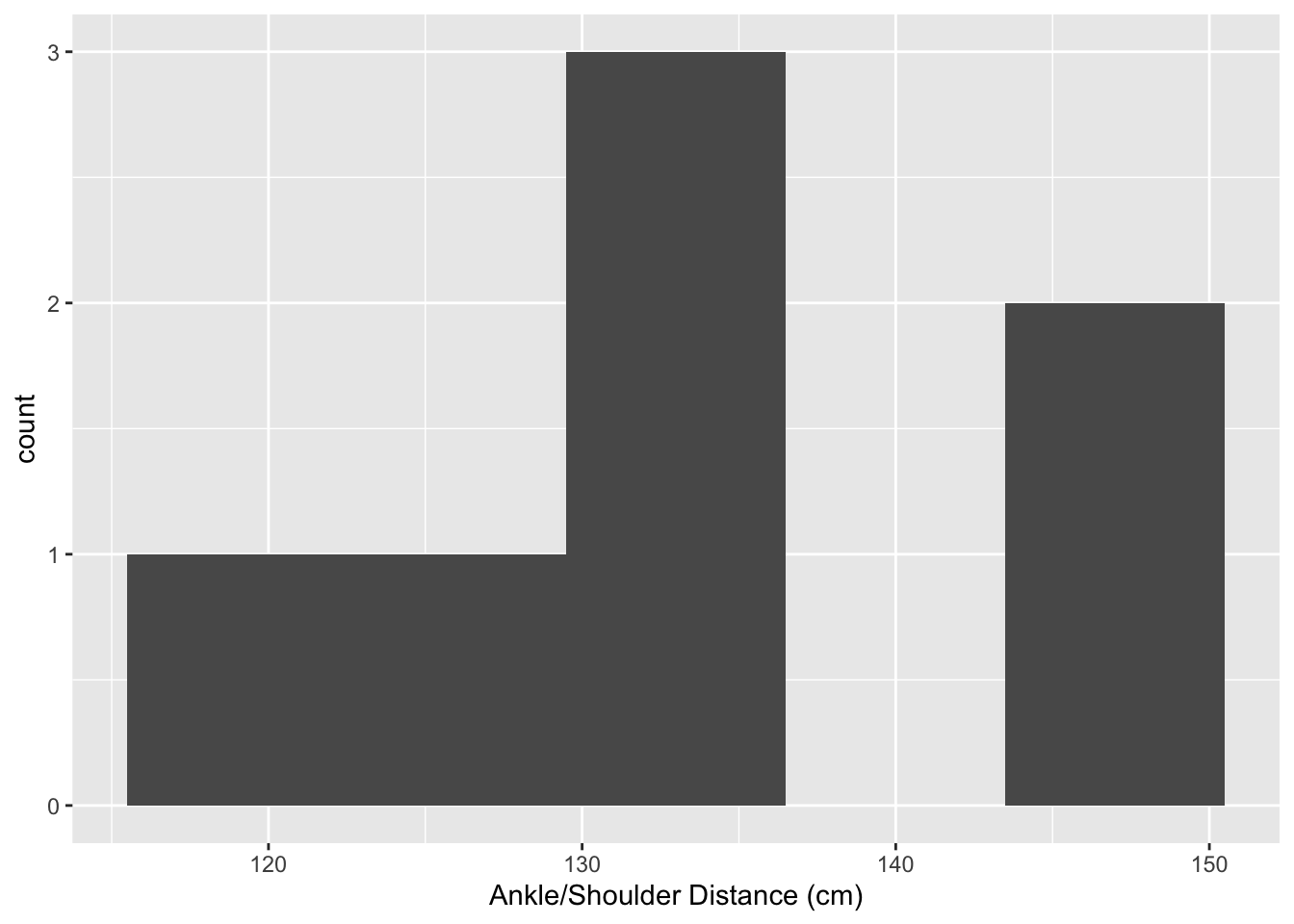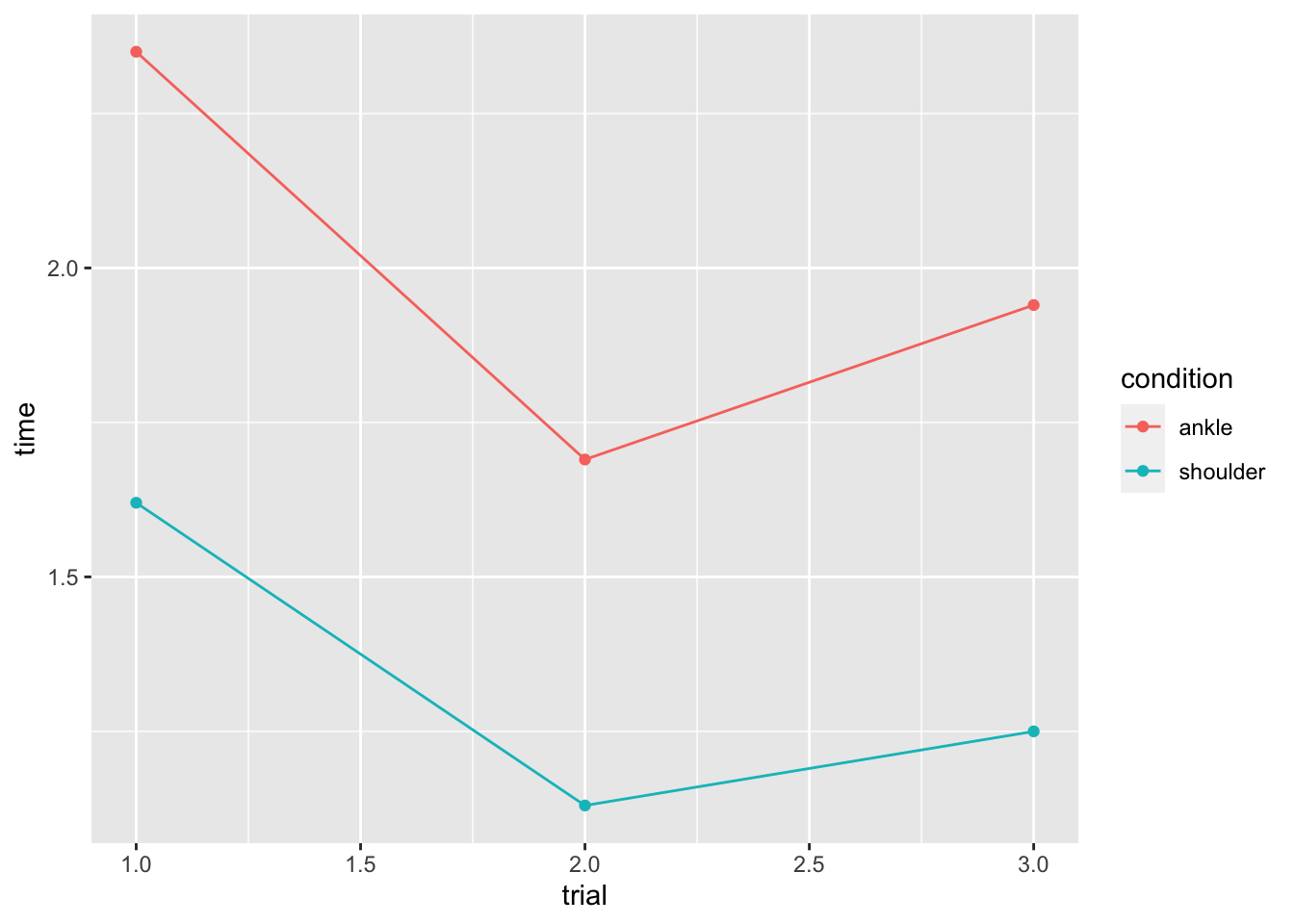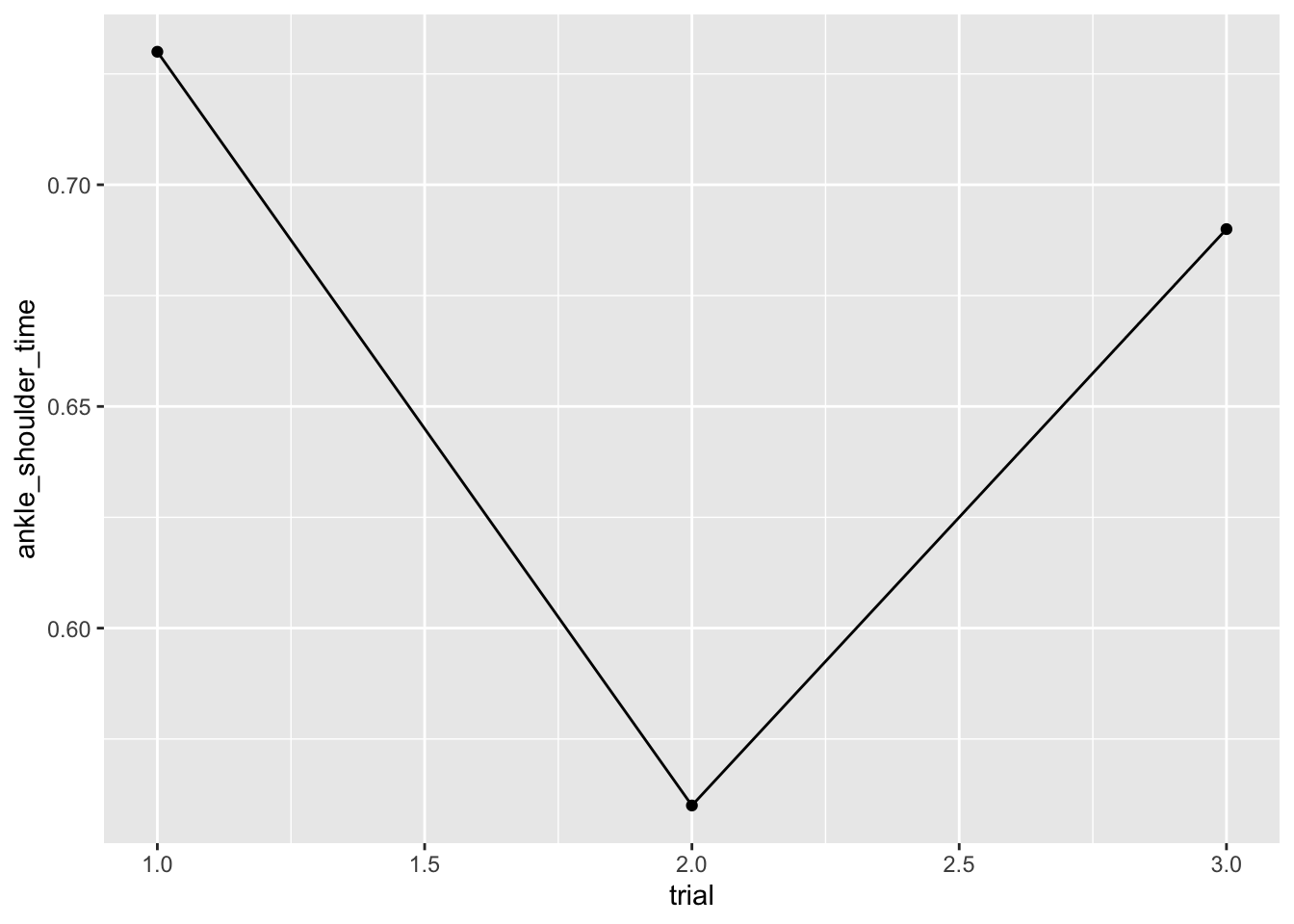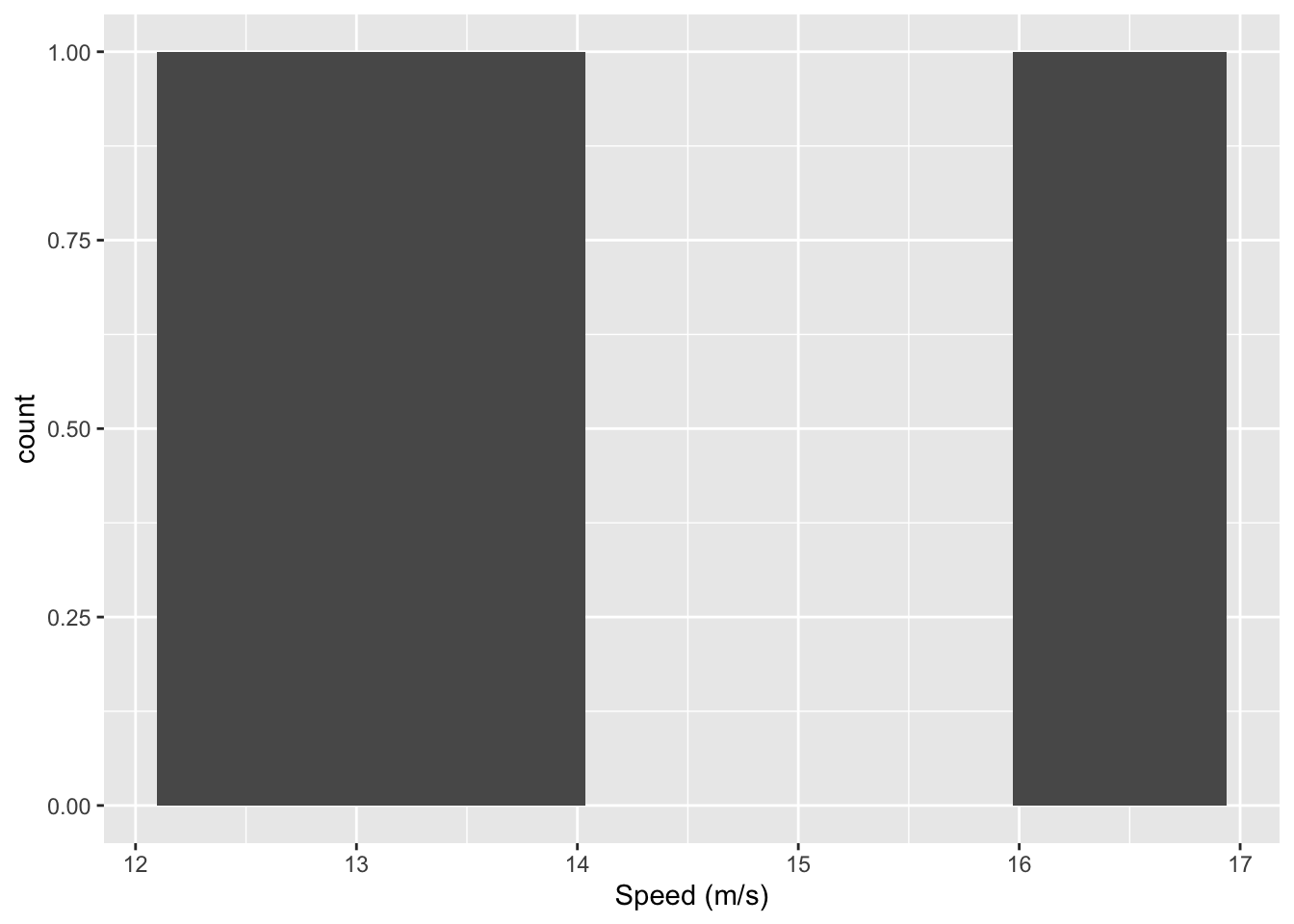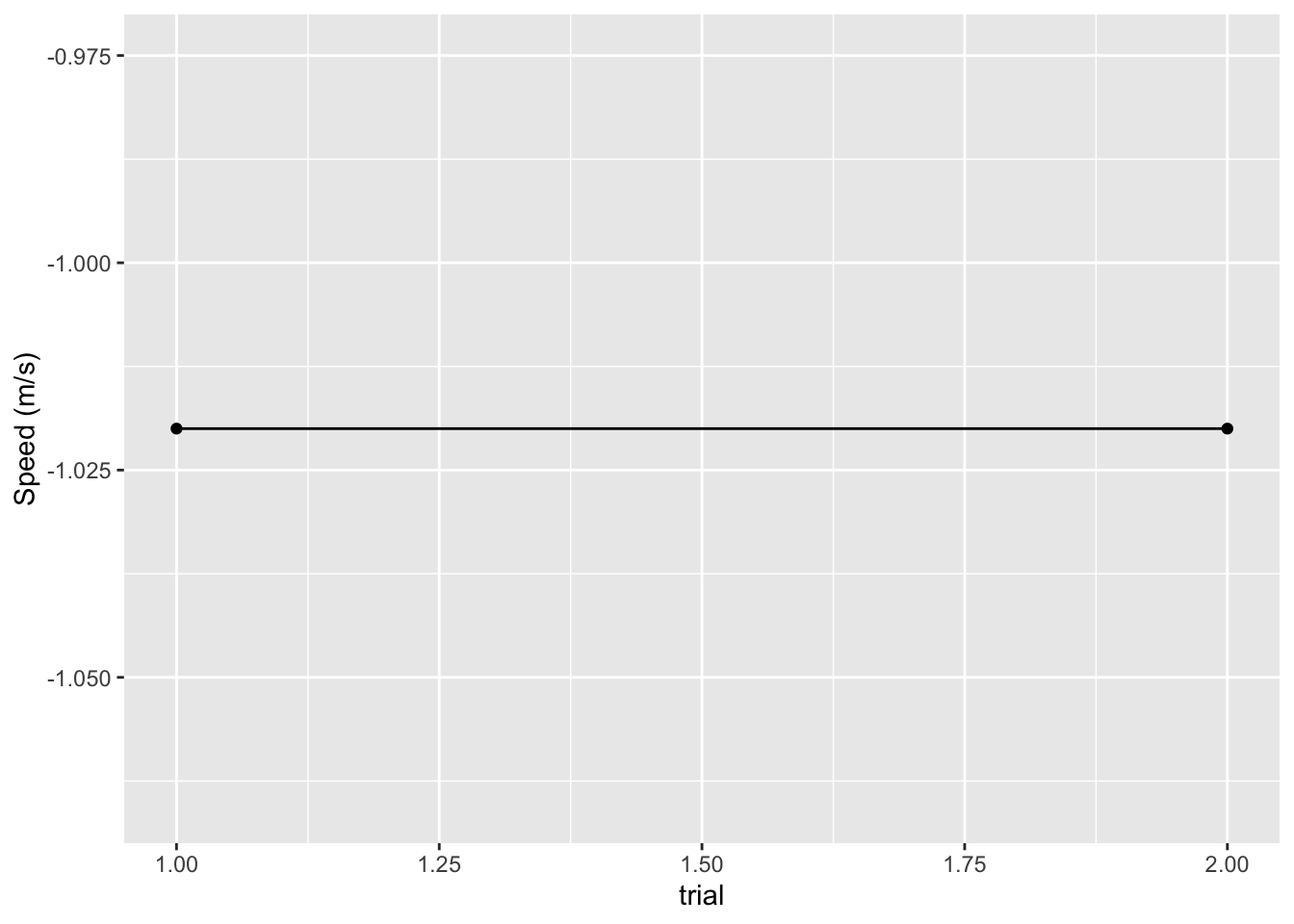Topic 15 Speed lab

Figure 15.1: Rigor Mortis by Richard Harris
PSYCH 490 The Reproducibility Crisis in Science
Background
Question
- How fast does the nervous system conduct information?
- Some prior evidence. Spring 2017 data
- Proprioception vs. touch
- Table of typical values from Wikipedia: https://en.wikipedia.org/wiki/Nerve_conduction_velocity
- Why do we care?
Method
- Speed (\(s\)) = Distance (\(d\))/Time (\(t\)), then \(t=d/s\)
- Chain of participants to make distance larger
- If typical person ~ 1.5 m, then
- at \(s=30\) m/s, \(t = d/s \rightarrow 1.5/30\) = 0.05 secs.
- Helpful to have \(n\) participants, where \(n>20\) or so.
Condition 1 (ankle)
- Squeeze (pull on) ankle
ankle_shoulder+shoulder_brain+brain_decide+brain_shoulder+shoulder_hand
Condition 2 (shoulder)
- Squeeze (pull on) shoulder
shoulder_brain+brain_decide+brain_shoulder+shoulder_hand- Condition 1 - Condition 2
ankle_shoulder+shoulder_brainbrain_decidebrain_shouldershoulder_hand
Measure
- sum(
ankle_shoulder) for all participants -> Distance - mean(time(Condition 1)) - mean(time(Condition 2)) -> Time
- Speed = Distance/Time
Decisions
- Same hand
or dominant? - Alternate ankle/shoulder
or one condition before the other? - How many trials?
- Fixed number = 3
When reach asymptote?How decide asymptote?
Data files
- Google Sheets Data file with body measurements
participant,ankleshoulder(cm)
- Data file with reaction times
- trial {1…n}, condition {ankle, shoulder}, time (s)
Results
Download data as CSV
- CSV = “comma-separated value”
## File downloaded:## • 'psych-260-bbh-203-2023-spring-distance'
## <id: 1Kt9Fny1HKy35MUYje-8yeFahR3LiHVEdycGVqPvBhfI>## Saved locally as:## • 'csv/psych-260-bbh-203-2023-spring-distance.csv'## File downloaded:## • 'psych-260-bbh-203-2023-spring-time'
## <id: 1ZVbAXhs3K6LFU62FfsXNpqGjsEHDXya6oRf12uhDkMU>## Saved locally as:## • 'csv/psych-260-bbh-203-2023-spring-time.csv'Reimport data
## New names:
## Rows: 29 Columns: 4
## ── Column specification
## ──────────────────────────────── Delimiter: "," chr
## (1): comment dbl (2): participant.id, ankleshoulder lgl
## (1): ...3
## ℹ Use `spec()` to retrieve the full column
## specification for this data. ℹ Specify the column types
## or set `show_col_types = FALSE` to quiet this message.
## Rows: 34 Columns: 4
## ── Column specification
## ──────────────────────────────── Delimiter: "," chr
## (2): condition, comments dbl (2): trial, time
## ℹ Use `spec()` to retrieve the full column
## specification for this data. ℹ Specify the column types
## or set `show_col_types = FALSE` to quiet this message.
## • `` -> `...3`Sum distance
## Min. 1st Qu. Median Mean 3rd Qu. Max.
## 119 127 131 133 140 147The total distance is 931 cm.
Discussion
- We tested the mean speed of neural propagation in a sample of \(n\)=7 college-age adults.
- The mean speed of neural propagation over 3 trials was 14.2903928 m/s with a range of [12.7534247, 16.625] m/s. However, the median was 13.4927536 m/s.
- This value is not in the range we predicted. It is slower by a factor of 2-3.
- These findings are not generally in accord with values we would expect from the literature.
Limitations
- Small sample size of participants.
- Timing was done by hand.
- Inexperienced group of participants. There was only 1 warm-up trial.
- Only did one ankle-shoulder measurement.
- Stopwatch had beep, could have alerted participants to coming squeeze.
- The reaction time of the person timing may have played a larger role because of the smaller number of participants.
